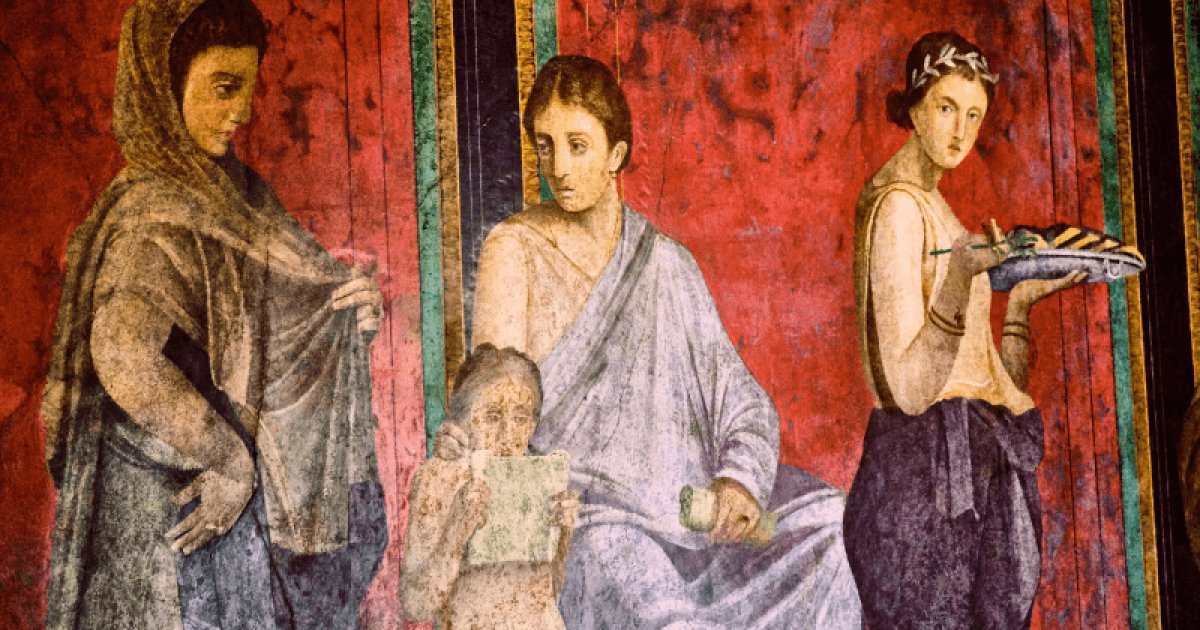VILLA OF THE MYSTERIES- REGIO VI SUBURBIO, Villa Of The Mysteries- Regio Vi Suburbio
 Language: English / USA
Language: English / USA
The most famous cycle of frescoes found in Pompeii is located in a splendid room of the so-called Villa of the Mysteries, located outside the city walls, a domus dating back to the 2nd century BC that was remodeled around 80 B.C.
It is a large, square-plan villa that had a different organization from classical Roman mansions. At the entrance, there was an area for the production and trade of wine and rooms such as kitchens reserved for servants' work.
Further inside was the peristyle and then the atrium, around which were the master's rooms, on the ground floor, and those for the servants, on the first floor.
The side of the villa that juts out towards the sea is supported by an embankment at the base of which was a cryptoporticus, a covered portico, partially underground, that was used as a warehouse.
The villa, which today cannot be accessed through the original entrance, houses interesting paintings of the second, third and fourth styles, including a very interesting one.
You should know, in fact, that the mystery from which the villa takes its name, which has ignited debates among scholars for years, is the significance of the large scenes painted on the walls of a triclinium, with a total length of 17 meters and with almost life-size figures.
The work has remained practically intact, retaining the original vivid colors, where the red of the walls is dominant, but the recurring color purple, symbol of wine, leads one to think that the rites and ceremonies depicted, to which a young woman undergoes, are linked to the cult of the god Dionysus, god of the grapevine, wine and sensuality.
Linked to the cult of this pagan deity were rituals called mystery rites, which were known only to his followers.
Another peculiarity of these paintings, therefore, is that the subject matter is not inspired by Greek mythology, as in most of the works found in Pompeii, but by a theme belonging to Roman culture.
The unknown author of the work should be credited with great skill in depicting the beauty of the faces and the gracefulness of the female figures intent on dancing and performing various ritual activities.
Here’s an interesting fact: a statue of Livia Drusilla, wife of the emperor Augustus, was found in the villa, so some have speculated that the complex might be related to her family. The only certain name, however, is that of the caretaker, discovered thanks to a seal, whose name was Lucius Zosimus.



